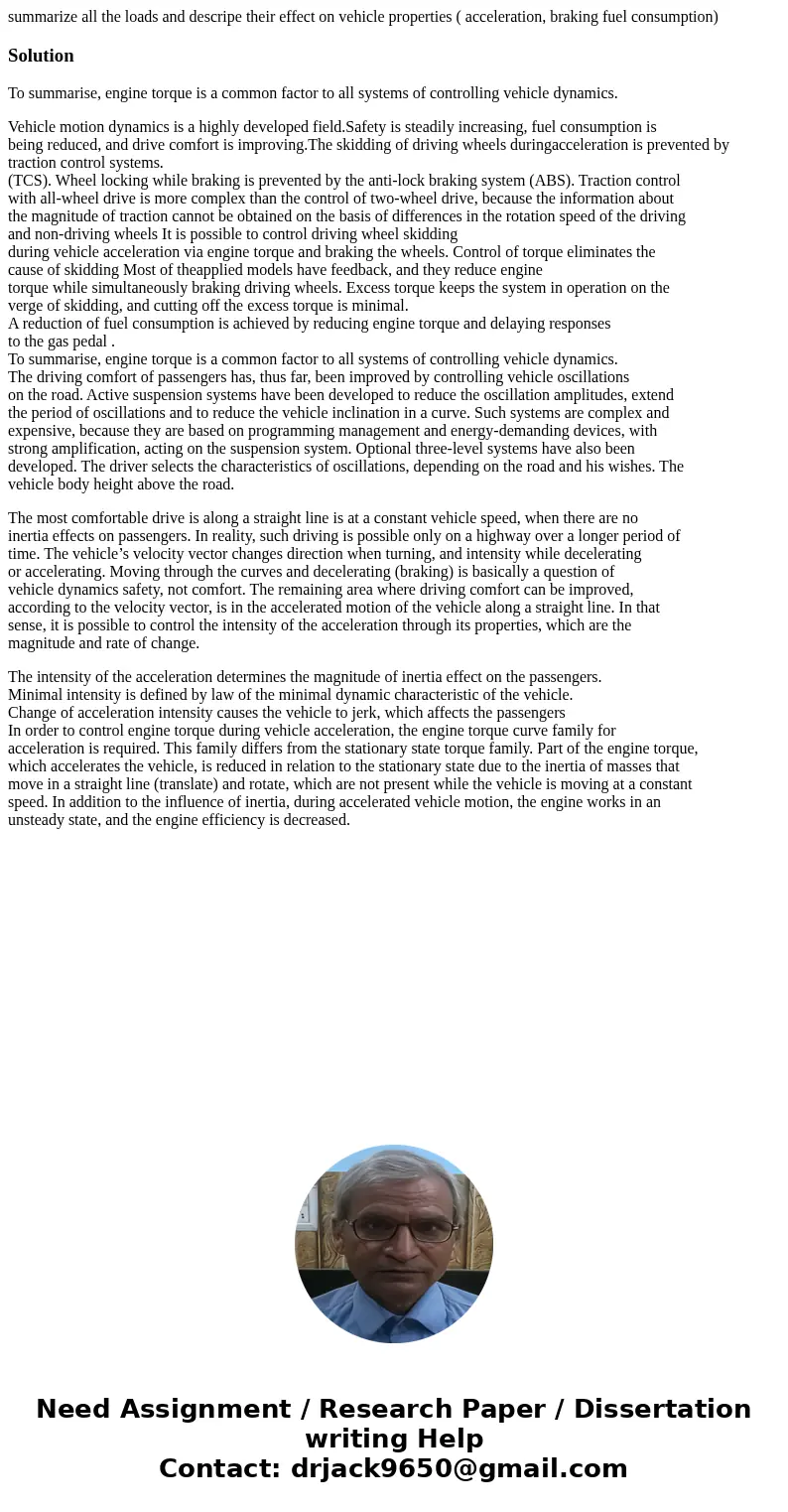summarize all the loads and descripe their effect on vehicle
summarize all the loads and descripe their effect on vehicle properties ( acceleration, braking fuel consumption)
Solution
To summarise, engine torque is a common factor to all systems of controlling vehicle dynamics.
Vehicle motion dynamics is a highly developed field.Safety is steadily increasing, fuel consumption is
being reduced, and drive comfort is improving.The skidding of driving wheels duringacceleration is prevented by traction control systems.
(TCS). Wheel locking while braking is prevented by the anti-lock braking system (ABS). Traction control
with all-wheel drive is more complex than the control of two-wheel drive, because the information about
the magnitude of traction cannot be obtained on the basis of differences in the rotation speed of the driving
and non-driving wheels It is possible to control driving wheel skidding
during vehicle acceleration via engine torque and braking the wheels. Control of torque eliminates the
cause of skidding Most of theapplied models have feedback, and they reduce engine
torque while simultaneously braking driving wheels. Excess torque keeps the system in operation on the
verge of skidding, and cutting off the excess torque is minimal.
A reduction of fuel consumption is achieved by reducing engine torque and delaying responses
to the gas pedal .
To summarise, engine torque is a common factor to all systems of controlling vehicle dynamics.
The driving comfort of passengers has, thus far, been improved by controlling vehicle oscillations
on the road. Active suspension systems have been developed to reduce the oscillation amplitudes, extend
the period of oscillations and to reduce the vehicle inclination in a curve. Such systems are complex and
expensive, because they are based on programming management and energy-demanding devices, with
strong amplification, acting on the suspension system. Optional three-level systems have also been
developed. The driver selects the characteristics of oscillations, depending on the road and his wishes. The
vehicle body height above the road.
The most comfortable drive is along a straight line is at a constant vehicle speed, when there are no
inertia effects on passengers. In reality, such driving is possible only on a highway over a longer period of
time. The vehicle’s velocity vector changes direction when turning, and intensity while decelerating
or accelerating. Moving through the curves and decelerating (braking) is basically a question of
vehicle dynamics safety, not comfort. The remaining area where driving comfort can be improved,
according to the velocity vector, is in the accelerated motion of the vehicle along a straight line. In that
sense, it is possible to control the intensity of the acceleration through its properties, which are the
magnitude and rate of change.
The intensity of the acceleration determines the magnitude of inertia effect on the passengers.
Minimal intensity is defined by law of the minimal dynamic characteristic of the vehicle.
Change of acceleration intensity causes the vehicle to jerk, which affects the passengers
In order to control engine torque during vehicle acceleration, the engine torque curve family for
acceleration is required. This family differs from the stationary state torque family. Part of the engine torque,
which accelerates the vehicle, is reduced in relation to the stationary state due to the inertia of masses that
move in a straight line (translate) and rotate, which are not present while the vehicle is moving at a constant
speed. In addition to the influence of inertia, during accelerated vehicle motion, the engine works in an
unsteady state, and the engine efficiency is decreased.

 Homework Sourse
Homework Sourse